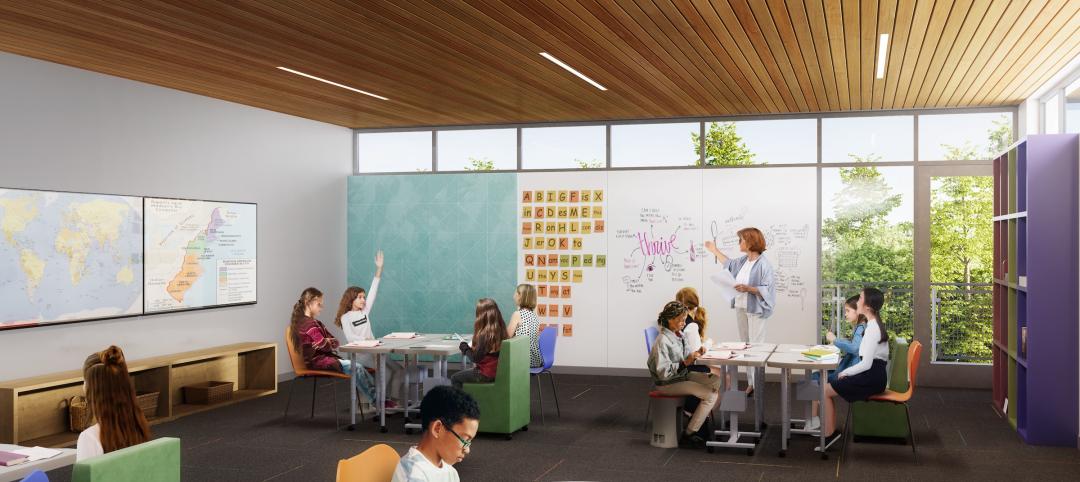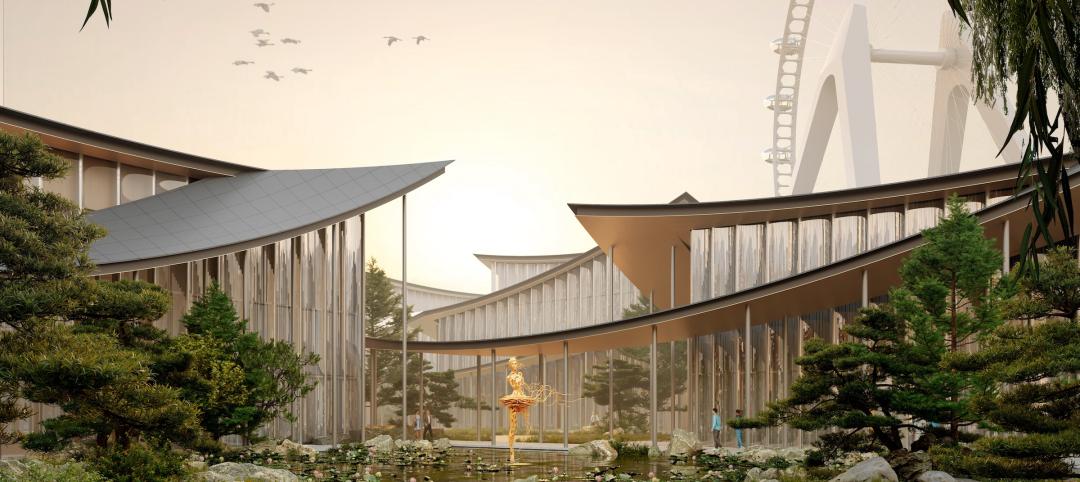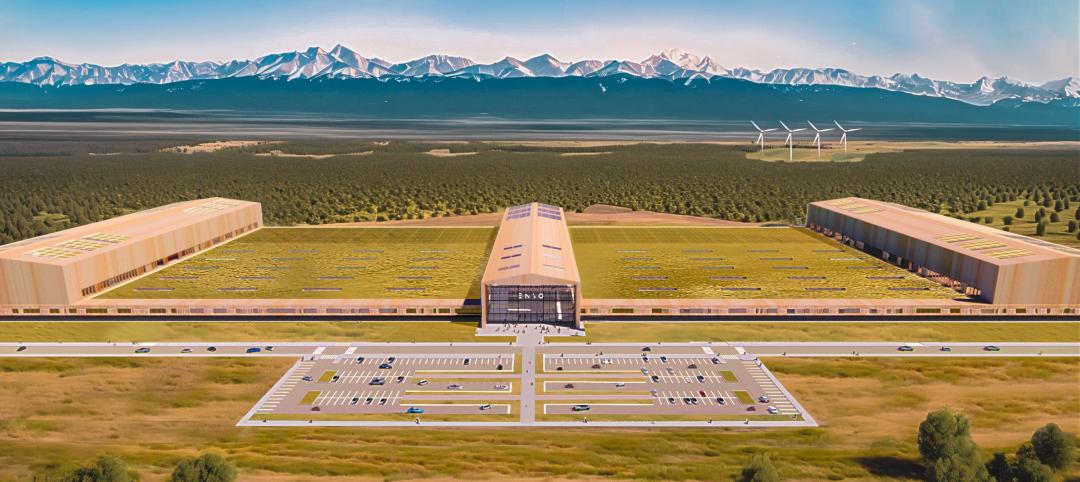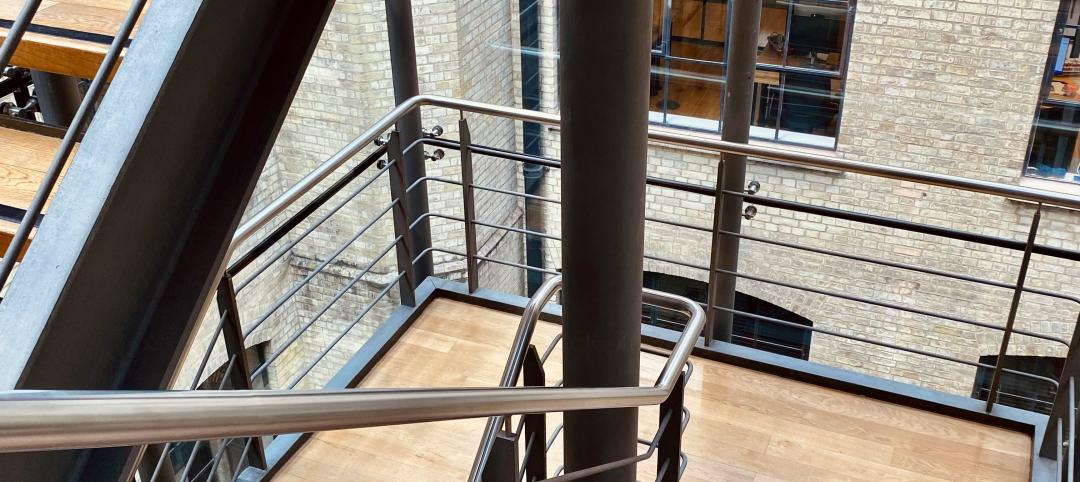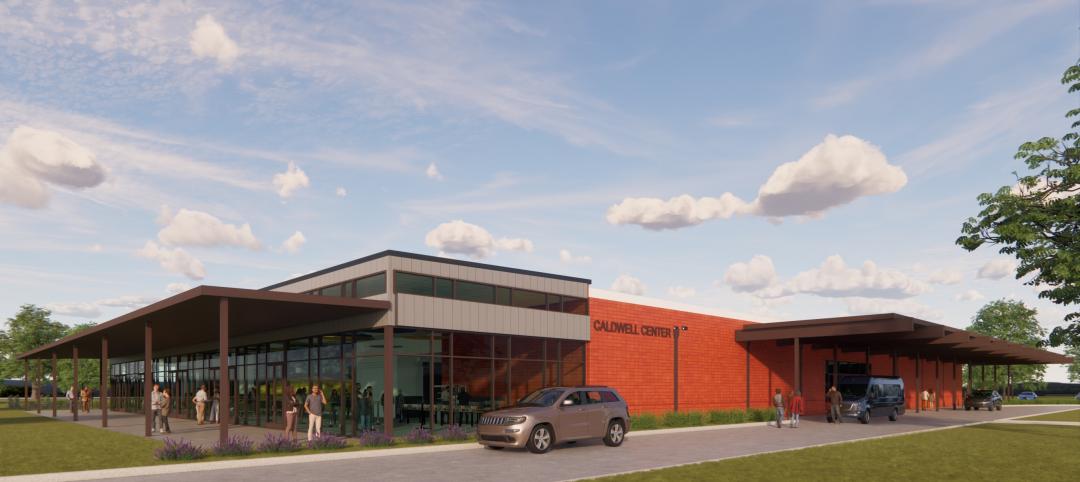The A.J. Celebrezze Federal Building, a 32-story office building in Cleveland, Ohio, was built in the late 1960s for the U.S. General Services Administration. As with many early generation window walls, significant deterioration has occurred over time due to moisture damage from failed drainage systems. This resulted in delamination of exterior wall panels, compromising the air and moisture barrier. The panels had been stabilized with a retrofit, but their effectiveness as a perimeter barrier has reached its limit, as evidenced by the occurrence of frost inside the exterior envelope during winter.
Our firm, Interactive Design, was engaged as the architect to correct the façade deficiencies for the $121 million project, which is funded under the American Recovery and Reinvestment Act of 2009. To mitigate these issues the façade renovation program was focused on four primary requirements: 1) repair/replacement of the building envelope, 2) providing blast protection, 3) upgrading the energy conservation of the envelope, and 4) maintaining full occupancy during construction.
Blast pressure analysis indicated that the frame of the building would accommodate increased loads, but only at the column floor beam connections. Noncomposite slab construction eliminated the transfer of loads via diaphragm. Therefore, new tube beams were added externally to transfer the wind, blast, and gravity loads to these points. Deflection of the tubes under blast conditions may not impact the structural frame. The geometry formulated an exterior configuration two feet, six inches deep, which led logically to the investigation of a double wall assembly.
Originally the project was conceived as an overclad wall system. However, adding an overclad assembly would have extended the volume of interior spaces, resulting in significant fire protection modifications and perimeter air distribution modifications to the existing fan coil units.
MAKING DOUBLE WALL VIABLE
Double wall technology is one of the most complex building envelope forms. Originally developed and employed in Europe, it has been relatively slow in migrating to the U.S. However, higher energy costs are now making these systems more viable. In new construction, the inability to offset the initial high envelope costs through energy savings historically has been the obstacle for double wall usage. Specialized projects, such as museum construction, can justify these initial costs due to constant temperature/humidity requirements. For renovation projects such as the A.J. Celebrezze Federal Building, the existing interior wall can be reused as the interior skin to offset much of the cost delta.
The design process for double walls relies on the integration of all systems. The ventilation environment of the building informs the design. It is imperative that an accurate and robust energy model be developed to assist in the analysis and creation of the double wall. A fundamental challenge was to understand the effect of a double wall upon the existing building. The design team embarked upon an extensive series of computational fluid dynamic studies. Winter, spring/fall, and summer conditions were run in extreme temperature and solar conditions. The purpose of the CFD analysis was to fully understand the temperature relationships in the wall cavity and occupied spaces during seasonal variances.
The architects were able to manipulate glazing layups, light shades, and frit variations to impact the performance characteristics. The design team pursued a variety of critical design paths simultaneously. These included both actively ventilated and sealed cavity conditions.
A significant factor for this project is that the building has historically a very low winter relative humidity. This ultimately permitted a sealed cavity system with no ventilation from either the inside or outside. The temperature and humidity of the internal cavity are allowed to float, so to speak, with its surrounding environments. It acts as a buffer between inside and outside, mitigating the differences between the two without using additional mechanical means, and minimizing energy consumption.
CUTTING ENERGY USE 65%
This system is designed to improve the existing perimeter energy consumption by approximately 65%. It is most efficient to the building during the winter months, when it acts like a thermal blanket and significantly reduces the need for heat from the existing perimeter fan coils. During summer months, shading systems block direct solar gain to the tenant-occupied spaces. The cavity will increase in temperature while not detrimentally affecting the interior environment or the existing mechanical system.
The final configuration is a noncombustible, sealed assembly that requires minimal maintenance. Access to the cavity is provided at each floor by operable interior windows in the inner wall.
The passive double wall system being employed at the A.J. Celebrezze Federal Building is one solution to the growing number of fully occupied buildings that have aging or seriously deteriorated skins. Economic constraints dictate that building owners cannot afford to empty their buildings of tenants to do replacement or maintenance work on façades. Therefore, systems such as this may offer an alternative to complete façade replacement, at the same time lowering energy consumption and enhancing sustainability by preserving existing materials. BD+C
--
Charles Young is a partner with Interactive Design, Inc., an architecture firm based in Chicago. This article is adapted from Chicago Architect, the journal of AIA Chicago.
Related Stories
K-12 Schools | Aug 29, 2024
Designing for dyslexia: How architecture can address neurodiversity in K-12 schools
Architects play a critical role in designing school environments that support students with learning differences, particularly dyslexia, by enhancing social and emotional competence and physical comfort. Effective design principles not only benefit students with dyslexia but also improve the learning experience for all students and faculty. This article explores how key design strategies at the campus, classroom, and individual levels can foster confidence, comfort, and resilience, thereby optimizing educational outcomes for students with dyslexia and other learning differences.
Museums | Aug 29, 2024
Bjarke Ingels' Suzhou Museum of Contemporary Art conceived as village of 12 pavilions
The 60,000-sm Suzhou Museum of Contemporary Art in Suzhou, Jiangsu, China recently topped out. Designed by Bjarke Ingels Group (BIG), the museum is conceived as a village of 12 pavilions, offering a modern interpretation of the elements that have defined the city’s urbanism, architecture, and landscape for centuries.
Adaptive Reuse | Aug 28, 2024
Cities in Washington State will offer tax breaks for office-to-residential conversions
A law passed earlier this year by the Washington State Legislature allows developers to defer sales and use taxes if they convert existing structures, including office buildings, into affordable housing.
Industrial Facilities | Aug 28, 2024
UK-based tire company plans to build the first carbon-neutral tire factory in the U.S.
ENSO, a U.K.-based company that makes tires for electric vehicles, has announced plans to build the first carbon-neutral tire factory in the U.S. The $500 million ENSO technology campus will be powered entirely by renewable energy. The first-of-its-kind tire factory aims to be carbon neutral without purchased offsets, using carbon-neutral raw materials and building materials.
Architects | Aug 28, 2024
KTGY acquires residential high-rise specialist GDA Architects
KTGY, an award-winning design firm focused on architecture, interior design, branded environments and urban design, announced that it has acquired GDA Architects, a Dallas-based architectural firm specializing in high rise residential, hospitality and industrial design.
K-12 Schools | Aug 26, 2024
Windows in K-12 classrooms provide opportunities, not distractions
On a knee-jerk level, a window seems like a built-in distraction, guaranteed to promote wandering minds in any classroom or workspace. Yet, a steady stream of studies has found the opposite to be true.
Building Technology | Aug 23, 2024
Top-down construction: Streamlining the building process | BD+C
Learn why top-down construction is becoming popular again for urban projects and how it can benefit your construction process in this comprehensive blog.
Airports | Aug 22, 2024
Portland opens $2 billion mass timber expansion and renovation to its international airport
This month, the Portland International Airport (PDX) main terminal expansion opened to passengers. Designed by ZGF for the Port of Portland, the 1 million-sf project doubles the capacity of PDX and enables the airport to welcome 35 million passengers per year by 2045.
Adaptive Reuse | Aug 22, 2024
6 key fire and life safety considerations for office-to-residential conversions
Office-to-residential conversions may be fraught with fire and life safety challenges, from egress requirements to fire protection system gaps. Here are six important considerations to consider.
Resiliency | Aug 22, 2024
Austin area evacuation center will double as events venue
A new 45,000 sf FEMA-operated evacuation shelter in the Greater Austin metropolitan area will begin construction this fall. The center will be available to house people in the event of a disaster such as a major hurricane and double as an events venue when not needed for emergency shelter.



